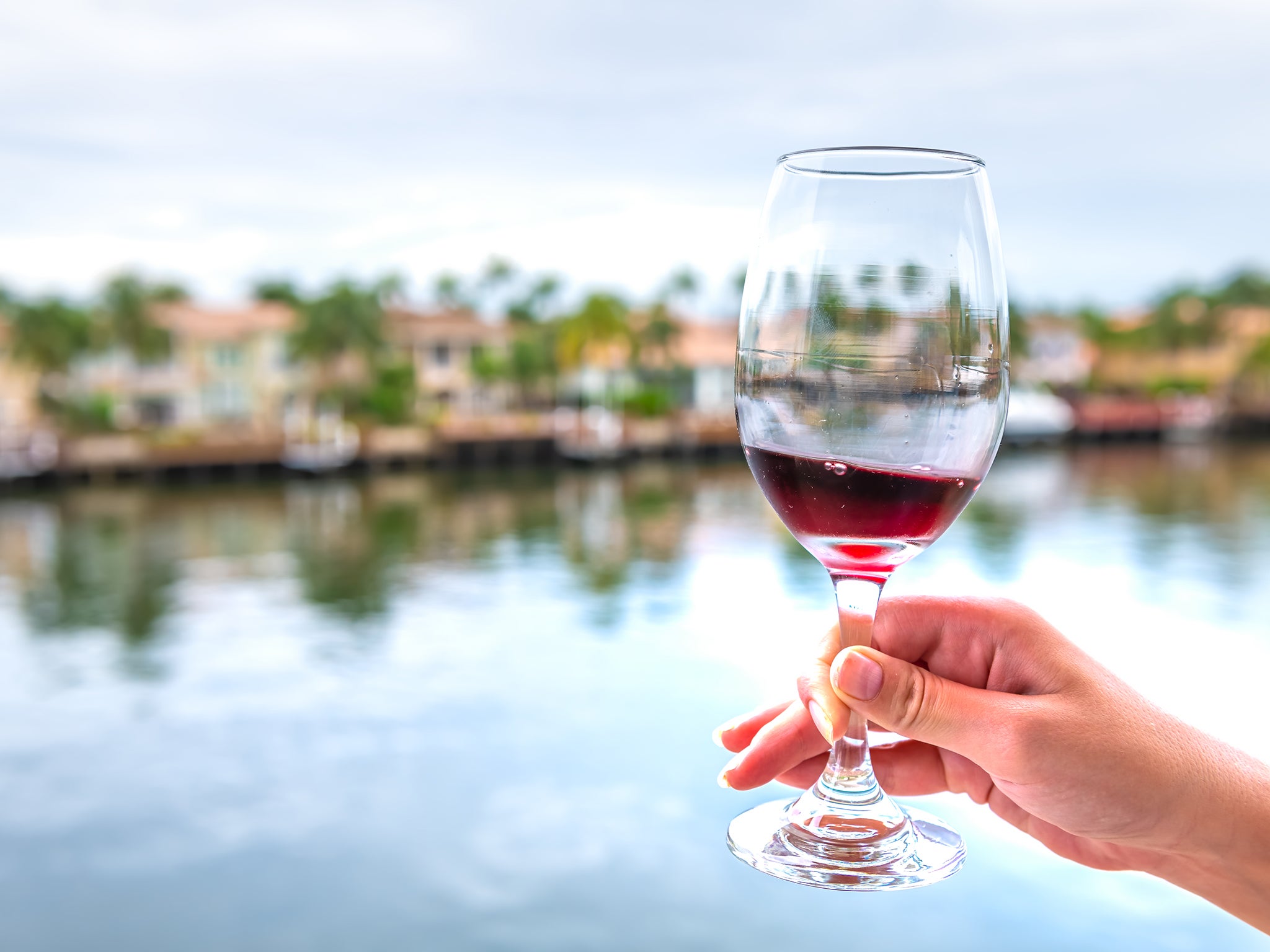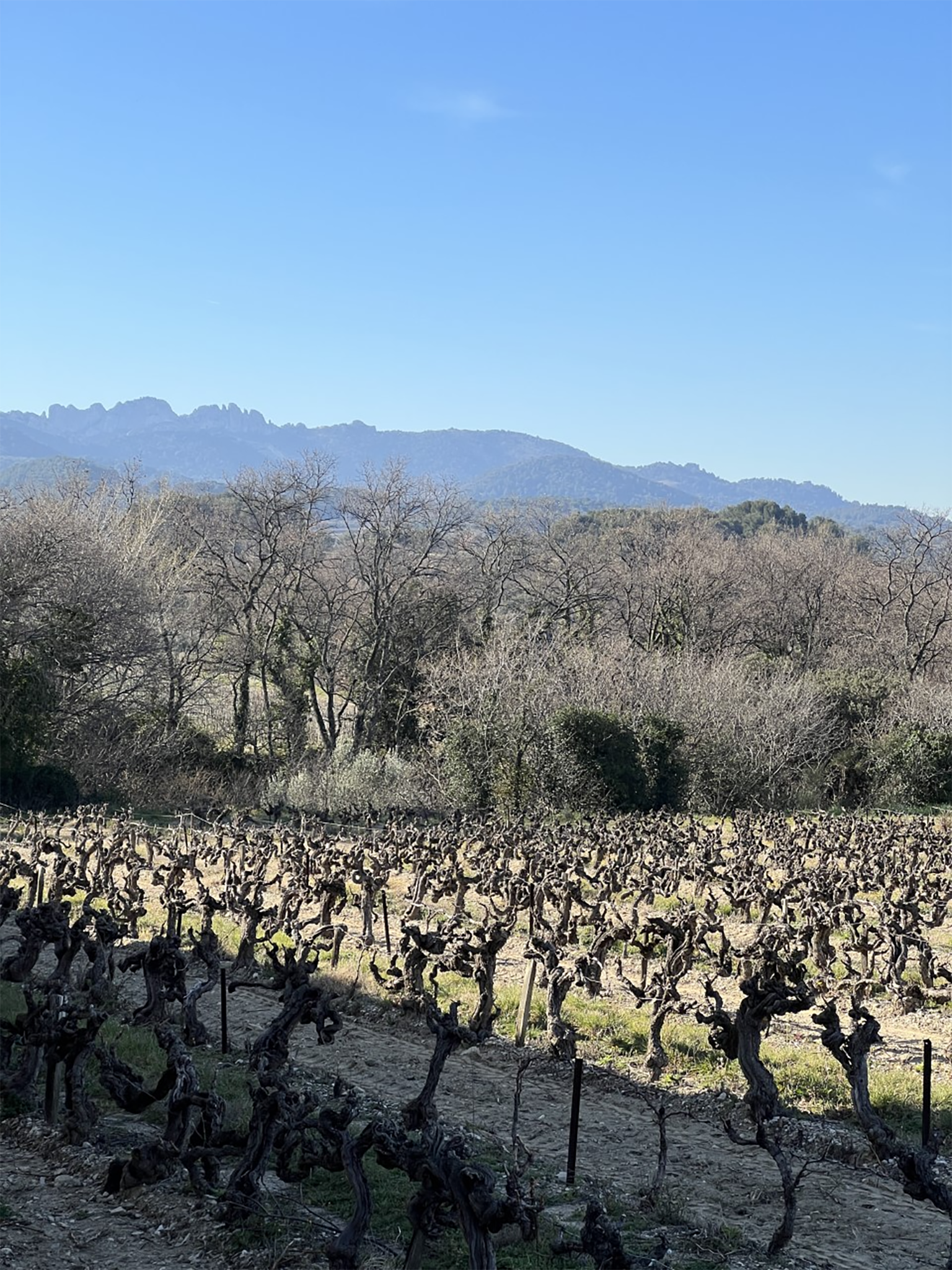Côtes du Rhône: Widely drunk, broadly underestimated
Famed for its unicorn wines (with price tags to match), the Rhône Valley is a sainted region for serious oenophiles with a penchant for old-school wines. But for those with shallower pockets, it’s also an under-the-radar spot to seek real value from a new generation of winemakers, says Hannah Crosbie


I’m gazing northwards on Avenue Dr Paul Durand in Tain L’Hermitage, wondering at what point in history Rhône winemakers chose to ignore the laws of gravity. I spent my formative years in the East Midlands, a Royston Vasey-adjacent place where there wasn’t much in the way of natural beauty to rest the eye on. You can imagine, then, the awe I am dumbstruck with on my first visit to the Rhône Valley. “The earth is vertical here,” I think.
I’ve arrived at the end of an incredibly dry March, and pruning season is well underway. Hunched-over students creep across the sheer, arid slopes like spiders. Behind closed doors, anxious winemakers pray for rain.
Wines are made across all quality levels in the Rhône Valley, but I’m really here to learn about the region’s most widely-drunk AOC: Côtes du Rhône. It’s my ol’ reliable when it comes to dinner parties, but there only really seems to be one style that the British public are familiar with. Ironic, really, given the incredible variety there is to discover. Wine has been produced in the Rhône Valley for centuries, first by the Greeks, and then the Romans, who would make wine for troops stationed nearby, selling any surplus to the local population.
In 1309, Pope Clement V moved the Papacy to Avignon, where a succession of wine loving popes improved the quality of the wines in the surrounding area. Pope Innocent VI, in particular, was keen to champion the local vineyards: only the finest vines were planted there, so the wines seriously increased in their quality.
So how did Côtes du Rhône go from being a papal favourite to an internationally recognised tipple? When the Papacy moved back to Rome, winemaking continued, and Côtes du Rhône enjoyed a popularity that extended far beyond the locals. It became a fast favourite of the French court and from the 1780s, it was being enjoyed by the British. The AOC (Appellations d’Origine Contrôlée) system was introduced by Baron Pierre Leroy de Boiseaumarié, a grower who wanted to ensure and champion the quality of Rhône wines around the world. His work evolved into the Côtes du Rhône Winegrowers Union, which went on to create its own appellation in 1937.

All winegrowers were permitted to join this AOC, on one condition: they had to comply with something called a cahier des charges: a set of rules and regulations by which a winemaker must legally abide (these can include rules of grape variety, wine colour and winemaking techniques). So, whenever you see a bottle labelled Côtes du Rhône, you can be sure it’s met this set of criteria.
Nowadays, it’s repeatedly said that historic winemaking regions are in the process of “reinventing” themselves. I’m acutely aware that I’ve arrived during a period of significant change: every single vigneron, cooperative and grower is preoccupied with two things. Firstly, there’s the obvious and looming question of sustainability (more on that later). Secondly, the modern drinker and what kind of wines they want to quaff.
If there’s a word that pins down the fickle desires of this new generation of drinkers, it’s freshness. For the time being, there’s a move away from the sinewy tannic reds of our parents’ dinner parties, and a trend towards something delicious and terroir-focused. I discover this style while in the back garden of Domaine de l’Amandine. Their windows are painted lavender, and their Côtes du Rhône Séguret is every bit as perfumed and lip-smacking as the strawberries we just picked from the side of the road. There’s a restraint and elegance I’m told is typical of the area.
If there’s a word that pins down the fickle desires of this new generation of drinkers, it’s freshness
A rediscovery of white and rosé Côtes du Rhône is also an emerging trend among modern drinkers. In Sablet, these wines slip down the throat with ease alongside a cheese and tomato pizza (100 per cent provençale, I’m assured). Since other markets have discovered that Côtes du Rhône comes in other colours, producers can’t seem to make enough of it. The latest vintage of a succulent rosé I taste (and adore) with Florence Quiot won’t make it out of the country – it’s already sold out.
By far the biggest shift, and one I see across every single domaine I visit, is one towards a more sustainable Rhône Valley. From the biodiversity, beehives and olive trees of Château d’Aigueville to the non-filtering, no-fining practises of cooperative Vignerons d’Estezargues, maintaining the region’s sainted terroir is top priority. They’ve often inherited the domaine from their parents, and want to make sure there’s something to pass onto their kids. Me? My kids will be inheriting a considerable collection of Côtes du Rhône, lucky things.
Four Côtes du Rhône to try:
1. Les Vignerons d’Estezargues ‘Les Oliviers’ Côtes du Rhône 2021
2. Domaine de Magalanne Côtes du Rhône Blanc 2020
3. Domaine Les Sibu Sablet Blanc Côtes du Rhône Villages 2021
4. Domaine de l’Amandine Séguret Côtes du Rhône Villages 2020
Join our commenting forum
Join thought-provoking conversations, follow other Independent readers and see their replies
Comments


Bookmark popover
Removed from bookmarks